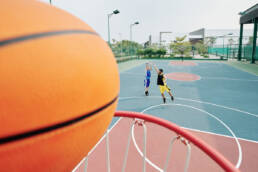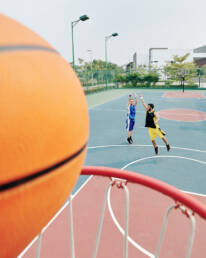
At Denver Sports Massage, we are dedicated to providing exceptional sports massage therapy to athletes and active individuals in the Denver area. Our highly trained and experienced therapists understand the unique demands of athletic performance and are committed to helping you achieve your goals. With our personalized approach and state-of-the-art techniques, we aim to provide the best possible care to our clients.
In this comprehensive guide, we will explore the benefits of sports massage, how it can improve athletic performance, enhance recovery, and help prevent injuries. We’ll also discuss why Denver Sports Massage is the top choice for athletes seeking the ultimate in sports massage therapy.
Understanding Sports Massage
Sports massage is a specialized type of massage therapy designed to meet the unique needs of athletes and physically active individuals. By combining various massage techniques, sports massage aims to address issues related to athletic performance, injury prevention, and recovery.
While many people associate massage with relaxation and stress relief, sports massage is specifically tailored to address the physical demands placed on the body during athletic activities. This type of massage therapy can be beneficial to individuals participating in any sport or physical activity, from weekend warriors to professional athletes.
The Benefits of Sports Massage
- Enhanced Performance: Sports massage can help improve an athlete’s performance by increasing flexibility, range of motion, and muscle balance. By targeting specific muscle groups and fascial lines, sports massage can help optimize biomechanics and ensure that the body is functioning at its peak. This, in turn, can lead to increased power, endurance, and overall performance.
- Faster Recovery: One of the primary goals of sports massage is to speed up the recovery process after intense physical activity. By promoting blood flow and lymphatic drainage, sports massage can help remove metabolic waste products from the muscles, reduce inflammation, and facilitate the healing process. This can lead to a faster return to training and competition, helping athletes stay on top of their game.
- Reduced Risk of Injury: Sports massage can help prevent injuries by addressing muscle imbalances, improving flexibility, and enhancing proprioception (the body’s awareness of its position in space). By identifying and addressing potential problem areas before they become problematic, sports massage can help athletes stay healthy and perform at their best.
- Psychological Benefits: In addition to its physical benefits, sports massage can also have a positive impact on an athlete’s mental well-being. Regular massage sessions can help reduce anxiety and stress, improve mood, and promote a sense of relaxation and well-being. This can help athletes maintain a positive mindset and perform better under pressure.
Techniques Used in Sports Massage
Sports massage therapists utilize a variety of techniques to address the specific needs of their clients, including:
- Swedish massage: A gentle technique that uses long, flowing strokes to promote relaxation and improve circulation.
- Deep tissue massage: A more intense form of massage that targets deeper layers of muscle and connective tissue, helping to release chronic tension and adhesions.
- Trigger point therapy: A targeted approach that focuses on releasing tight knots or “trigger points” in the muscles that can cause pain and dysfunction.
- Myofascial release: A technique that addresses the fascia, the connective tissue that surrounds and supports the muscles, to improve flexibility and reduce restrictions in movement.
- Active release technique (ART): A specialized method that combines massage with active movement to help break up adhesions and improve mobility.
- Sports stretching: Specific stretches designed to improve flexibility and range of motion in targeted muscle groups, helping to enhance athletic performance and reduce the risk of injury.
Our Sports Massage Services
At Denver Sports Massage, we offer a wide range of sports massage services tailored to the individual needs of our clients.
Our services include:
- Pre-event Sports Massage: These are short, stimulating massages done 15-45 minutes before the sports event. The goal is to increase circulation, flexibility, and mental clarity to improve performance.
- Post-event Sports Massage: Done within an hour or two of the event, this type of massage aims to normalize the body’s tissues, reduce muscle tension, promote relaxation, and kick-start the recovery process.
- Maintenance Sports Massage: Regular massages given during training to allow the athlete to train harder and with less injury.
- Rehabilitation Sports Massage: This is beneficial for athletes with injuries. Our therapists can help you recover faster by reducing pain and swelling, promoting flexibility, and improving strength and range of motion.
Choosing the Right Sports Massage Therapist
When selecting a sports massage therapist, it’s essential to find someone who has the necessary experience and expertise to address your specific needs.
Here are some factors to consider when choosing a sports massage therapist:
- Training and certification: Look for a therapist who has completed a sports massage therapy program and holds a current certification.
- Experience: Seek a therapist who has experience working with athletes and active individuals, as they will be better equipped to understand and address your unique needs.
- Specialization: Some therapists may specialize in specific sports or conditions. Find a therapist who is knowledgeable about your sport or activity to ensure the most effective treatment.
- Communication: A good therapist should be able to listen to your concerns, assess your needs, and develop a personalized treatment plan to help you achieve your goals.
Why Denver Sports Massage is Your Top Choice
At Denver Sports Massage, our team of highly trained and experienced therapists is committed to providing the best possible care to our clients.
Here are just a few reasons why we are the top choice for athletes seeking sports massage therapy in Denver:
- Expertise: Our therapists are certified in sports massage therapy and have extensive experience working with athletes of all levels and disciplines.
- Personalized approach: We understand that each athlete is unique, and we develop customized treatment plans to address your specific needs and goals.
- Cutting-edge techniques: Our therapists stay up-to-date on the latest research and advancements in sports massage, ensuring that you receive the most effective treatment possible.
- State-of-the-art facility: Our clinic is designed with the needs of athletes in mind, providing a comfortable and relaxing environment for your treatment sessions.
- Commitment to excellence: At Denver Sports Massage, we are dedicated to helping you achieve your athletic potential and maintaining the highest standards of care.
Experience the benefits of sports massage
Whether you’re training for an upcoming event, looking to enhance your performance, recover from an injury, or simply stay active, our team at Denver Sports Massage is ready to help.
Contact us today to book your appointment. Our knowledgeable and friendly staff will guide you through the process, answer any questions you may have, and match you with the right therapist for your needs. We look forward to supporting your athletic journey and helping you unlock your full potential.
At Denver Sports Massage, we believe that every athlete deserves the best. Let us help you perform at your best, recover faster, and achieve your athletic goals. Experience the Denver Sports Massage difference today!
You can contact us via phone at (303) 630-9603.
FAQ
The frequency of sports massage sessions can vary depending on your individual needs, training schedule, and goals. Some athletes may benefit from weekly sessions, while others may require treatment less frequently. Your therapist can help determine the best plan for you.
Yes, sports massage can play an important role in injury recovery by promoting circulation, reducing inflammation, and helping to restore normal muscle function. Your therapist will work with you to develop a treatment plan tailored to your specific injury and recovery goals.
No, sports massage can benefit individuals at all levels of physical activity, from recreational athletes to elite competitors. Whether you’re training for a marathon or simply want to stay healthy and active, sports massage can help you reach your goals.
Some techniques used in sports massage, such as deep tissue massage and trigger point therapy, can be intense and may cause some discomfort. However, your therapist will work with you to ensure that the pressure and techniques used are appropriate for your needs and tolerance.


